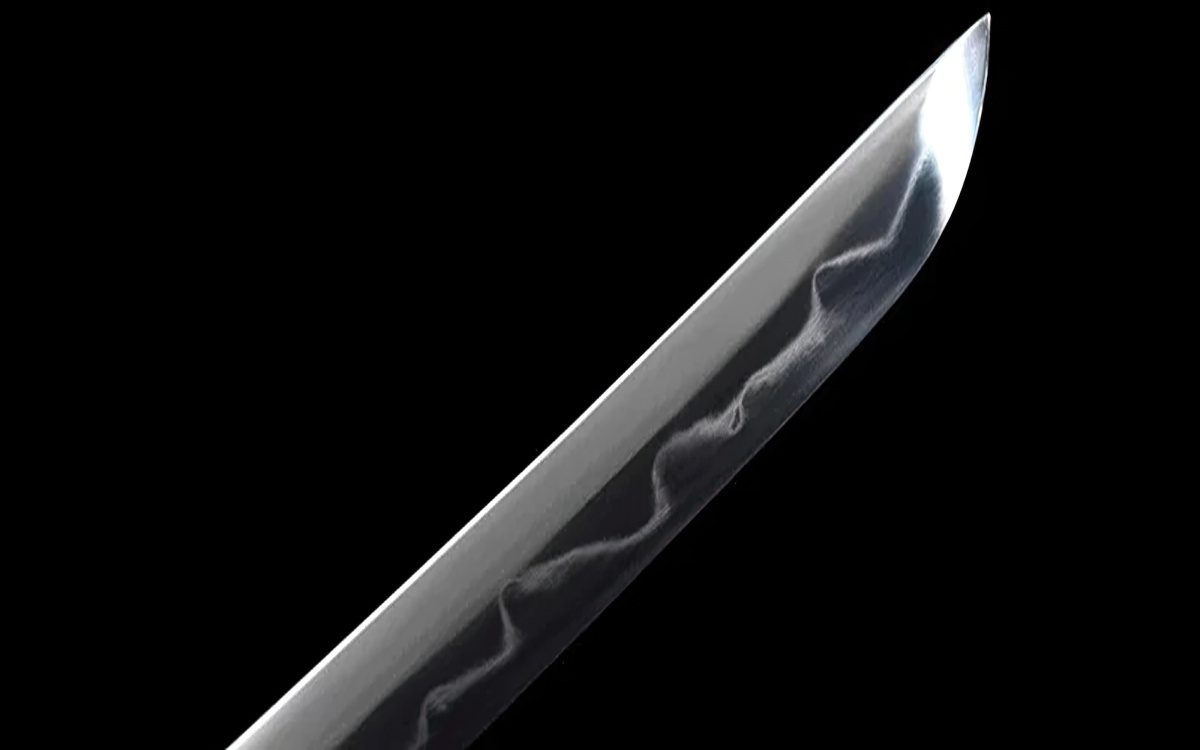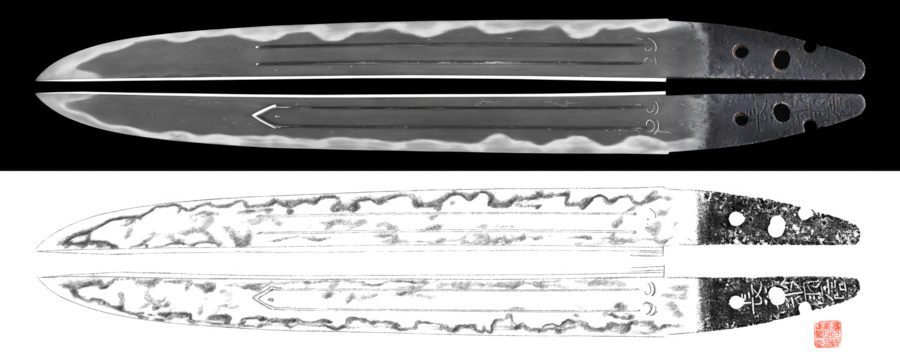8 Fascinating Types of Hamon Found on Japanese Blades
NO AI USED This Article has been written and edited by our team with no help of the AI

The hamon is the distinctive pattern along the hardened edge of a Japanese blade, enhancing both its cutting performance and aesthetic appeal. There are at least fifty unique hamon patterns, each with its own name and characteristics. These patterns often reflect specific swordmaking traditions, regional styles, and historical trends.
Let’s explore the most popular types of hamon found on Japanese blades, including the terminologies experts use to describe them.
Different Types of Hamon Patterns
There are many hamon patterns, with complex designs evolving to meet the demands for hard, sharp, and functional swords. The two primary types of hamon are straight and irregular patterns. Often, a blade features a combination of these patterns.
Hamon are sometimes named according to their distinctive shapes. Photographs of sword blades often capture only the outlines of the hamon, leaving fine details unseen. An oshigata, however, is an accurate drawing of the blade that reveals the hamon’s intricate and complex details.
1. Suguha (Straight)

Suguha is a generic term for a straight hamon. It runs parallel to the cutting edge and may vary in width. It may be classified as hiro-suguha (wide), chu-suguha (medium), or hoso-suguha (narrow). An extremely narrow suguha is called ito (string) suguha.
2. Midareba (Irregular)

All hamon other than suguha (straight) can be considered midareba. It may be classified based on its irregularity: small irregularities (ko-midare) or large irregularities (o-midare). However, there is a wide variety of irregular hamon, many of which have their own names.
3. Gunome (Waves)

A gunome hamon is recognized for its regular wavy pattern or semicircular waves. It generally has the same width at the base and top of the wave. Depending on its size, it may be called ko-gunome (small) or o-gunome (large).

Various other types of gunome hamon are also referred to by their respective shapes. The togari gunome is a gunome in which the peaks are pointed and orderly, while the sanbon-sugi resembles a cluster of three cedar trees. It can be mixed midareba and then is called gunome midare.
4. Notare (Irregular and Undulating)

The outline of the notare hamon is irregular and undulating, featuring elongated waves. Depending on the amplitude of the waves, they can be classified as ko-notare (small) or o-notare (large). If a hamon is composed of entirely notare waves, it is called notare-ba, which features waves that swell towards and away from the cutting edge in an irregular pattern.
5. Choji (Clove Flowers)

The choji hamon is made to look like clove buds (choji) and comes in many variations. Generally, it is an irregular hamon and its clove patterns can range from small to large, regularly waved, and irregularly wavy. Double or multiple choji clustered together is called juka choji. Sometimes, a choji wave resembles the shape of a tadpole (kawazuko) when viewed from above and is called kawazuko choji.
6. Sudareba (Bamboo Curtain)

Sudare is a bamboo-strip blind, similar to the pattern inside the hamon. The sudareba hamon may be based on suguha (straight) or shallow notare (elongated waves). It resembles the multiple parallel lines running parallel to the cutting edge.
7. Toranba (Large Waves)

The toranba hamon features large, surging waves that form deep valleys and high peaks. Sometimes, it features a rounded tempered spot called tama (jewel), separate from the main hamon.
8. Hitatsura (Mottled)

The term hitatsura literally means everything hardened. Most recognized for its wild and untamed look, the hitatsura hamon features scattered patches and spots of hardened steel throughout the blade in addition to normal hamon.
What Is An Etched Hamon?
An etched hamon is an artificially created pattern, achieved through acid or chemical treatments combined with selective etching and polishing. This method is used to imitate the hamon patterns found on traditionally made Japanese blades. Unlike genuine hamon, which develops naturally during the blade’s heat treatment, an etched hamon is applied after the blade is manufactured.
Therefore, an etched hamon does not affect the sword’s cutting performance and lacks the depth and complexity of a genuine hamon. Typically, an etched or stenciled hamon will display a perfectly clean line, without the misty appearance of a real hamon.

